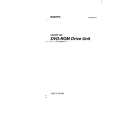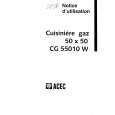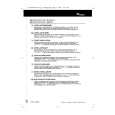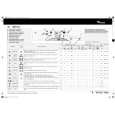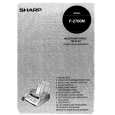|
|
|
Productos
|
|
Información
|
|
Destacado
|
|
|
 |
|
|
No hay comentarios de productos.
F-2700MDE
4. Fusing section
After transfer, toner on the paper is heated and fused in the fusing section. This machine employs the heat roller pressure pad system for fusing.
Heat roller:
This roller is made of aluminum tube (14mm diameter and 0.5mm thickness) coated with teflon which has a high friction coefficient (for greater transport force) and a high separation capacity. The 400W halogen lamp is used. This spring presses the heat roller with a 690g pressure on one side. The pressure pad is covered with the teflon sheet for smooth paper transport when fusing. The employment of the pressure pad and the teflon sheet allows fusing in a low pressure (only 690g on one side). Two thermistors of chip type with good response are used to respond to rapid heating (rapid warm-up of about 8sec) of the heat roller. One is in close contact with the heat roller to detect the heat roller temperature. The other is separated from the heat roller to detect the ambient temperature.
Heater lamp: Pressure spring: Teflon sheet and pressure pad:
FD guid
Thermistor:
Temperature fuse 1: Temperature fuse 1 is installed to the fusing cover. It blows off when the ambient temperature of the fusing cover rises abnormally (132�C). Temperature fuse 2: Temperature fuse 2 is in close contact with the heat roller. It blows off when the heat roller temperature rises abnormally high (187�C).
A. Electrical connection
IC6
6 2
IC5
11
15
CNPW
Q10 32
VR1 CN4
B. Operations
This machine uses two thermistors; one is in close contact with the heat roller to detect the heat roller temperature (Thermistor 1 in Fig. 12-24), the other is separated from the heat roller to detect the ambient temperature (Thermistor 2 in Fig. 12-24). The heat roller temperature is controlled by these both data. (Temperature control is performed by turning on/off the heater lamp.) For example, the heat roller temperature is controlled to 155�C when the ambient temperature is 25�C. When the ambient temperature falls, the heat roller temperature is raised. When the ambient temperature rises, the heat roller temperature is lowered.
8 � 22
|
|
 |
> |
|
